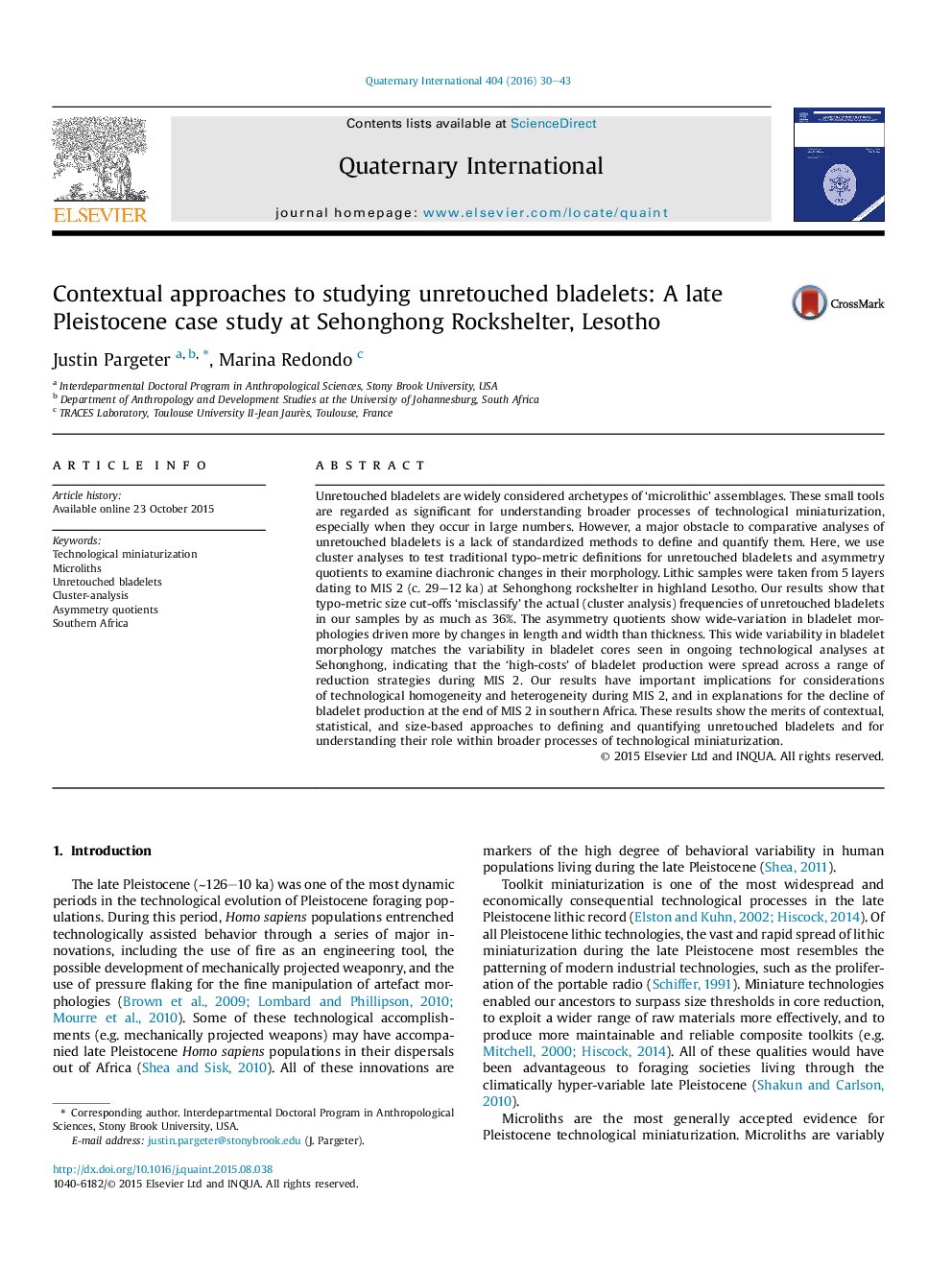| Article ID | Journal | Published Year | Pages | File Type |
|---|---|---|---|---|
| 1040055 | Quaternary International | 2016 | 14 Pages |
Unretouched bladelets are widely considered archetypes of ‘microlithic’ assemblages. These small tools are regarded as significant for understanding broader processes of technological miniaturization, especially when they occur in large numbers. However, a major obstacle to comparative analyses of unretouched bladelets is a lack of standardized methods to define and quantify them. Here, we use cluster analyses to test traditional typo-metric definitions for unretouched bladelets and asymmetry quotients to examine diachronic changes in their morphology. Lithic samples were taken from 5 layers dating to MIS 2 (c. 29–12 ka) at Sehonghong rockshelter in highland Lesotho. Our results show that typo-metric size cut-offs ‘misclassify’ the actual (cluster analysis) frequencies of unretouched bladelets in our samples by as much as 36%. The asymmetry quotients show wide-variation in bladelet morphologies driven more by changes in length and width than thickness. This wide variability in bladelet morphology matches the variability in bladelet cores seen in ongoing technological analyses at Sehonghong, indicating that the ‘high-costs’ of bladelet production were spread across a range of reduction strategies during MIS 2. Our results have important implications for considerations of technological homogeneity and heterogeneity during MIS 2, and in explanations for the decline of bladelet production at the end of MIS 2 in southern Africa. These results show the merits of contextual, statistical, and size-based approaches to defining and quantifying unretouched bladelets and for understanding their role within broader processes of technological miniaturization.
